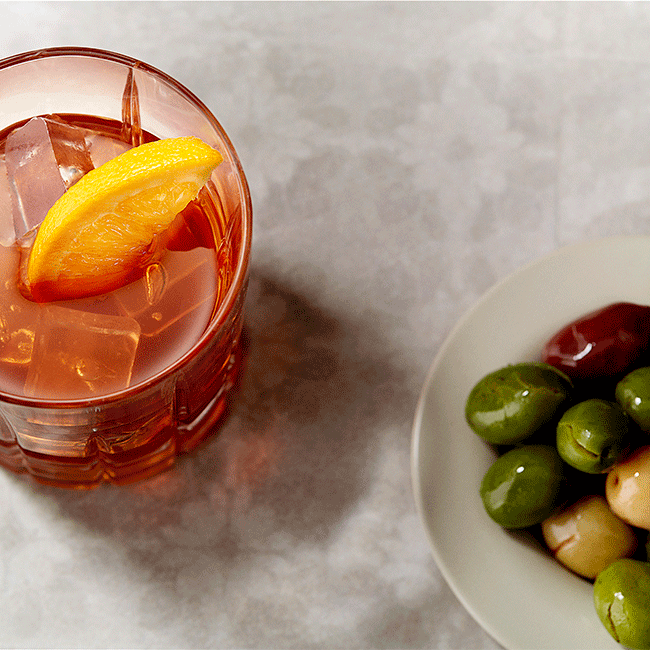.png.transform/rendition-xs/image_image%20(1).png)
The Vermouth Hour – Reviving a Long-Lived Mediterranean Custom
The last ten years have seen an explosion of new Spanish vermouths as younger generations rediscover “the vermouth hour” - the pre-lunch period when families in cities like Barcelona, Madrid and Valencia would meet for an aperitif.

Long associated with the Mediterranean, Josep Sucurrats Miró, one of the authors of Teoría and Practica del Vermut credits co-author Miquel Àngel Vaquer, of Casa Mariol as being instrumental in starting the revival of vermouth among younger people, particularly in Barcelona, by re-launching his family’s vermouth in modern packaging, which made this traditional product cool again, perfect for informal gatherings with friends.
Far from a new beverage, according to Jack Adair Bevan, author of A spirited guide to Vermouth (2019), the history of this aromatized wine can be traced back thousands of years to ancient China and India where medicinal wines counted wormwood among their herbal ingredients. But it was in the Levant where Arnau de Vilanova, a physician and theologian born in Valencia in 1240, is credited with writing down a recipe that added spirit to wormwood wine to stop fermentation and retain sweetness, a process that is still used today.
Method of production of the Vermouth in Spain
Recipes vary, but the name vermouth comes from the German word for wormwood, and this is the only herbal ingredient that it must contain, although since 1991 any related plant may be used. Wine should make up at least 75% of the volume, fortified to between 14.5% and 22% ABV, and flavored with botanical ingredients that can include bark, roots, spices, herbs and peels. It can be sweetened with grape must, sugar or caramel.
Each producer uses their own, usually secret recipe, although Basque Country-based
Licores Barañano, prints their family’s 1881 recipe directly on to the bottle of their award-winning vermouth. The ingredients include gentian, one of the bitterest flavors known to man, as well as wormwood, chamomile, mint, juniper, tea, cloves, raspberry, cinnamon and orange.
Juan Sanz Belda of Bodegas Alonso Sanz in Valencia explains how they also use their great-grandfather’s artisanal recipe to make Vermut 4 Xavos, “We warm up the wine, stirring in caramelized sugar. We macerate around 40 ingredients, including wormwood, cinnamon and other local mountain herbs for two months in a Macabeo-base wine. We also make a white vermouth that doesn’t contain so many botanicals, but does contain more citrus – lemon, orange – as well as cinnamon, clove and wormwood, it’s more refreshing.”
The base wine

The difference between red and white vermut does not usually correlate to the base wine -in both cases a neutral white wine is normally used – but to the botanicals used and the addition of caramel. But there are exceptions, Cillar de Silos in the Ribera del Duero uses Tempranillo as a base for their deeply colored, particularly smooth, Vermut Golfo.
A recent phenomenon is the revival of sherry-based vermouths, where the salinity of sherry makes a delicious counterfoil to the sweeter botanicals. Lustau produces a range that use different blends of sherries as the base – the Vermut Rojo is based on Amontillado and Pedro Ximénez, the Blanco - Fino and Moscatel - and the latest edition, an unusual Vermut Rosado, blends crisp Fino with sweet Moscatel and fruity Tintilla de Rota wine. Osborne’s recently launched red Vermouth blends Medium and PX Sherries with botanicals including wormwood, dittany and bitter orange peel.
Oak ageing
As in wine, oak barrels can be used to soften the texture and add particular flavors to vermouth.
Martínez Lacuesta has been producing vermouth in Haro, Rioja since 1937, with barrel ageing intrinsic to its particular style. Alongside its traditional Vermut Rojo Lacuesta, aged in American oak barrels, it also makes Reservas aged in French oak and acacia wood barrels.
Other producers make “Reservas” and “Gran Reservas” using oak –Zarro in Madrid makes a highly spiced Gran Reserva, which spends 18 months in oak – and Miró’s Reserva Etiqueta Negra spends 9 months in oak barrels. One of Spain’s oldest producers, Miró also innovates: “Rojo Fusión” macerates Arbequina olives in the blend, for a delicious salty-sour taste.
How to serve vermouth

Rather than a cocktail ingredient, in Spain, vermouth is traditionally served pre-dinner on the rocks, with the bitter herbs serving to arouse the appetite and aid digestion.
As producer Juan Sanz Belda explains, “Add a cube or two of ice and a slice of orange with the red and a slice of lemon with the white. People who find it too strong could add a touch of soda water, but I prefer it on its own. Serve with something vinegary or spicy – boquerones, marinated olives.”
When pairing vermouth, it serves to remember that sweetness is a good counterpoint to spicy heat. Bitterness can be reduced by salty or acidic flavors, so a very bitter, dry vermouth like Barrañano works particularly well with salty crisps and anchovies, where as a lighter, sweeter style like Lustau Vermut Rosado goes well with spicy olives. Beyond aperitifs, chefs are experimenting with pairing vermouth with fish dishes, ham and even desserts. ¡Salud!
Text: Anna Harris-Noble

